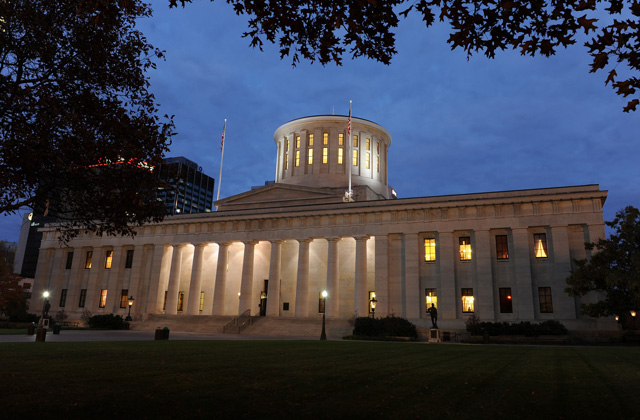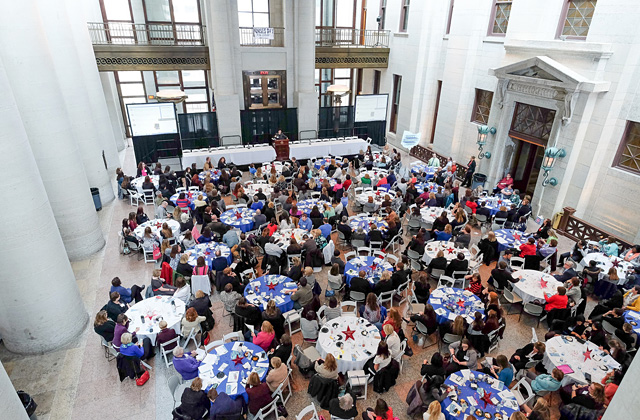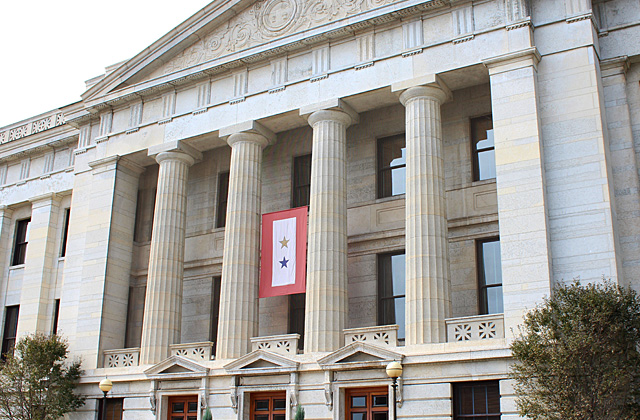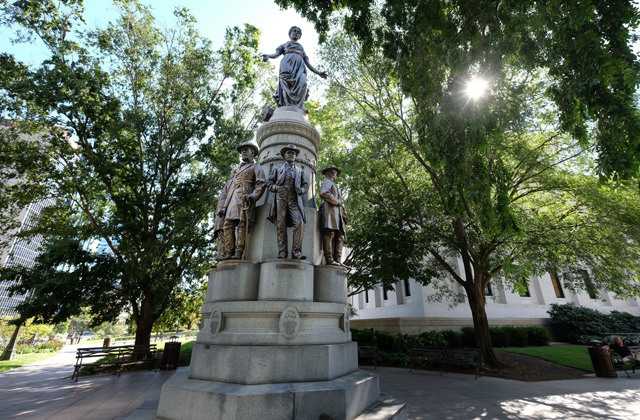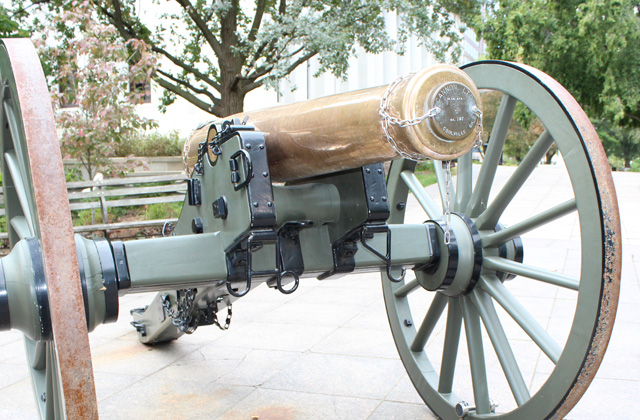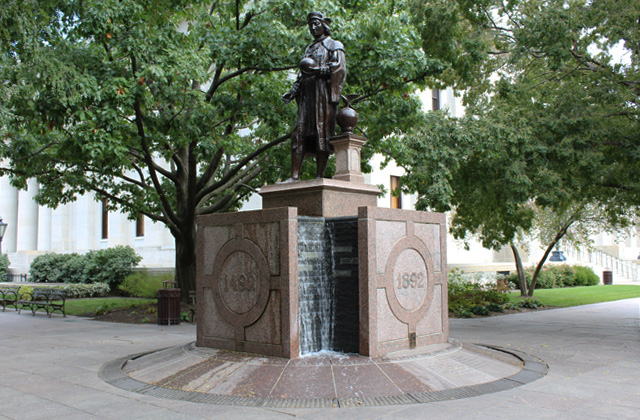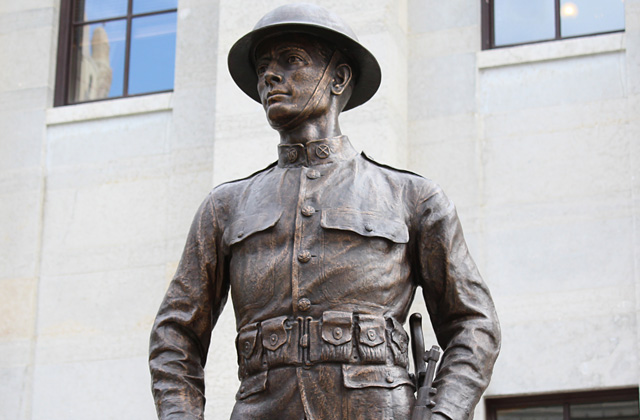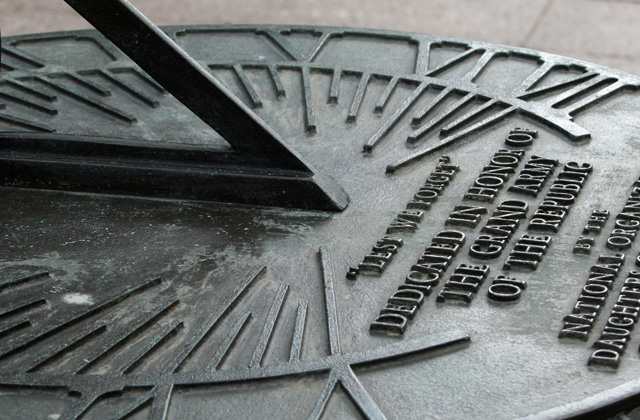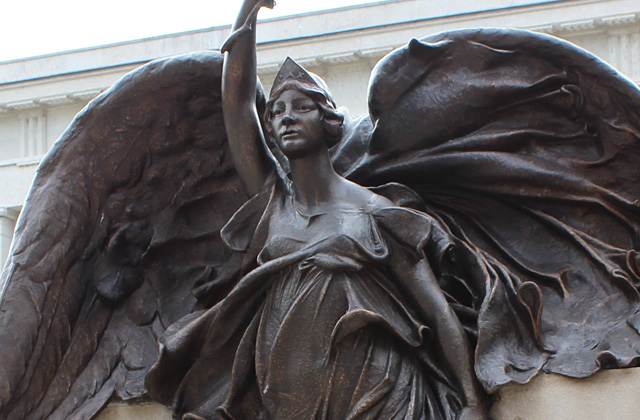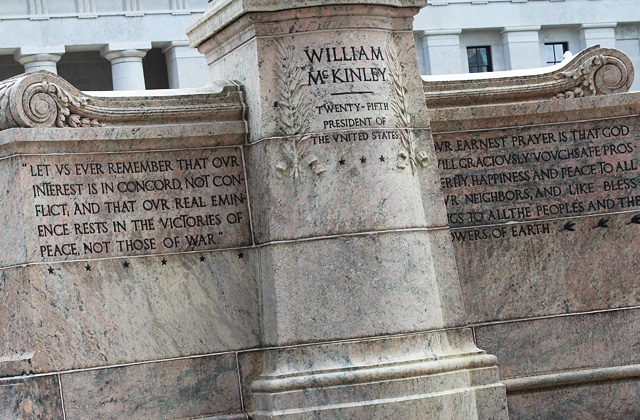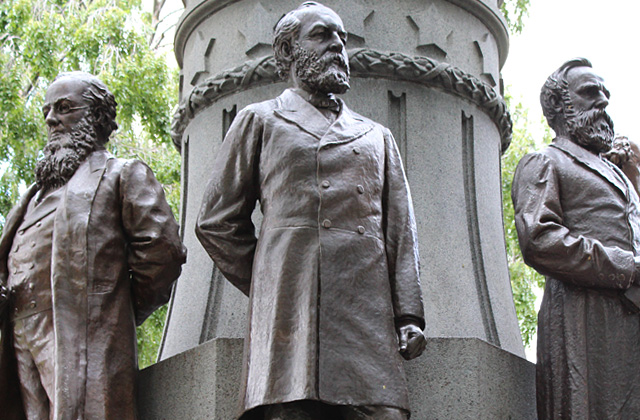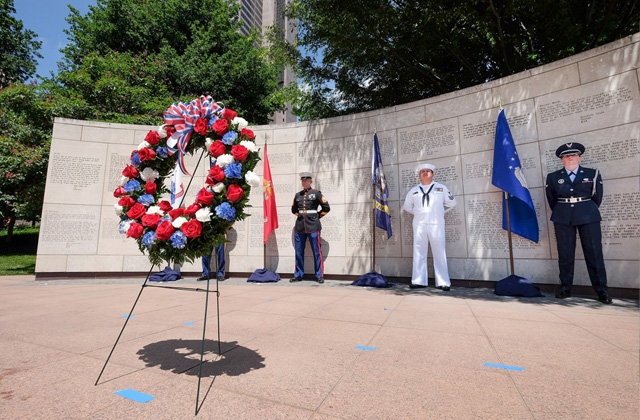About
Visit
Museum
Photos
Video
News
Events
Roof and Building Improvement Project - click on Announcements
thru Dec. 19 - noon choirs sing on weekdays



"These Are My Jewels"
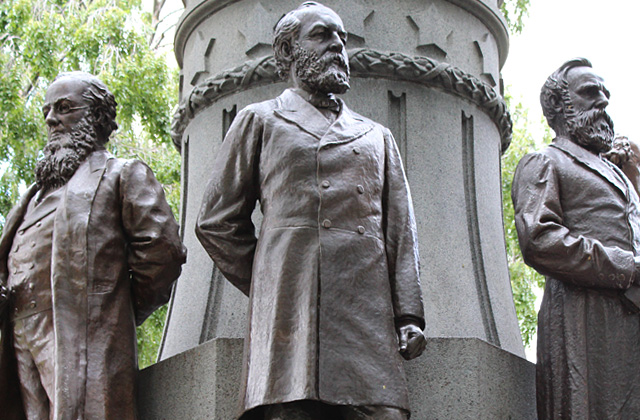 The sculptural group These Are My Jewels is an imposing addition to the northwest corner of the Statehouse grounds. Tall and commanding, a series of life size portrait sculptures arranged around a drum shaped base gives recognition to the military and political leaders from the state of Ohio who contributed greatly to the Union cause during the Civil War.
The sculptural group These Are My Jewels is an imposing addition to the northwest corner of the Statehouse grounds. Tall and commanding, a series of life size portrait sculptures arranged around a drum shaped base gives recognition to the military and political leaders from the state of Ohio who contributed greatly to the Union cause during the Civil War. The title of the statue is taken from an anecdote of Roman history. The figure atop the statue is Cornelia, a wealthy and respected Roman woman whose sons Gaius and Tiberius were prominent in military action and in politics. The story goes that Cornelia was visited by several friends who took delight in displaying their new and expensive garments and elaborate jewelry, and after each of the women had taken their turn at being complimented, they asked their hostess where her fine things were. The quick witted Cornelia left the room, her face alight with pride and returning with her sons pronounced, "These are my jewels."
In the context of the statue Cornelia personifies the state of Ohio, presenting to the nation in time of crisis with the state's best and brightest sons to be used in the service of the war effort. The idea of the statue comes from the boast of General Roeliff Brinkerhoff who claimed that Ohio's most distinguished contribution to the nation was her men. Brinkerhoff was president of the Ohio Archeological and Historical Society, forerunner of today's Ohio History Connection, and had the conception of using Cornelia in a monument of some kind that would be part of an Ohio Pavilion at the World Columbian Exposition in Chicago in 1893. The details were worked out by architect and sculptor Levi Tucker Scofield, a Union officer himself, who had previously created the epic "Sailors' and Soldiers' Monument" in Cleveland. The original plan was to honor six Ohioans: Generals Ulysses S. Grant, William T. Sherman, James A. Garfield and Phillip Sheridan as well as Treasury Secretary Salmon P. Chase and Secretary of War Edwin Stanton, and this is how the piece was first shown.
During its display at the Chicago event, the monument's location was less than ideal. Originally intended to house a show case of Ohio products of industry and agriculture as well as art and handicraft, the Ohio building was essentially a very comfortable and rather ornate public convenience station—a rest room.. The artwork would have a more fitting setting when it was brought to Columbus after the close of the World Exposition. Public subscription raised the funds needed to bring the monument to Columbus, erect it on the grounds of the Statehouse, and create a seventh "jewel". Governor William McKinley lead efforts to honor his old commanding officer, Rutherford B. Hayes on the Jewels monument, so that portrayed around the drum shaped base of the statue are no less than three of the state's eventual eight Presidents.
The Jewels statue would be a popular land mark for downtown pedestrians, and was humorously portrayed by Columbus native James Thurber in his short story "The Day the Dam Broke". In Thurber's description of the panic surrounding the 1913 flood in the downtown area, he conjures up the hilarious image of a woman climbing onto the bronze shoulders of the Jewels in her frenzied attempt to escape the approaching flood waters, which actually never came.
 Holiday Festival and Tree Lighting 2025
Holiday Festival and Tree Lighting 2025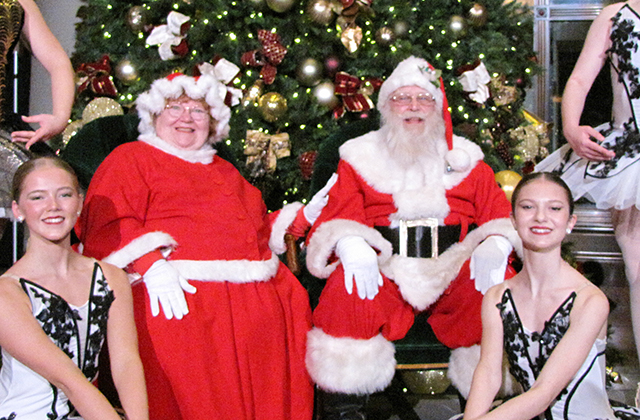 Holiday Santa Photos 2025
Holiday Santa Photos 2025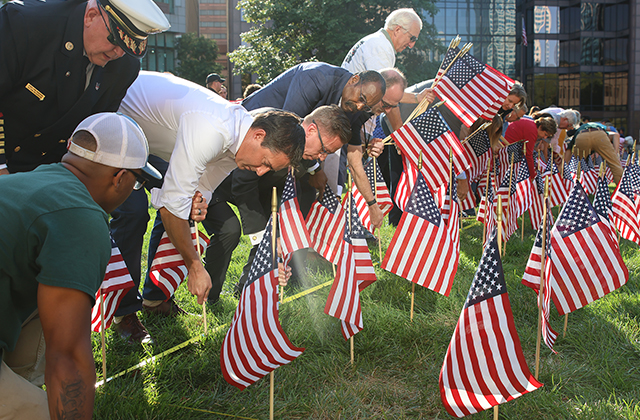 Flags for 9-11 in 2025
Flags for 9-11 in 2025 2025 Volunteer Appreciation Dinner
2025 Volunteer Appreciation Dinner America 250-Ohio
America 250-Ohio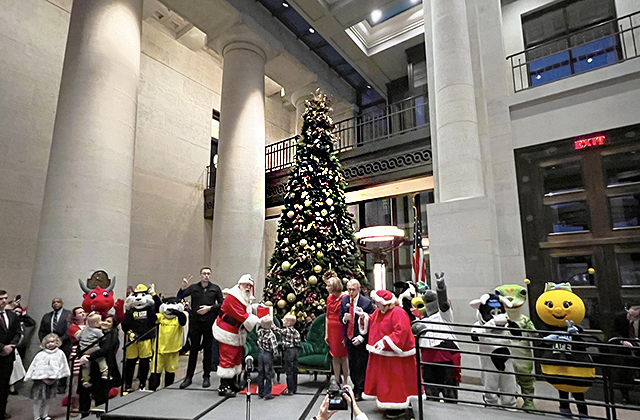 Holiday Festival and Tree Lighting 2024
Holiday Festival and Tree Lighting 2024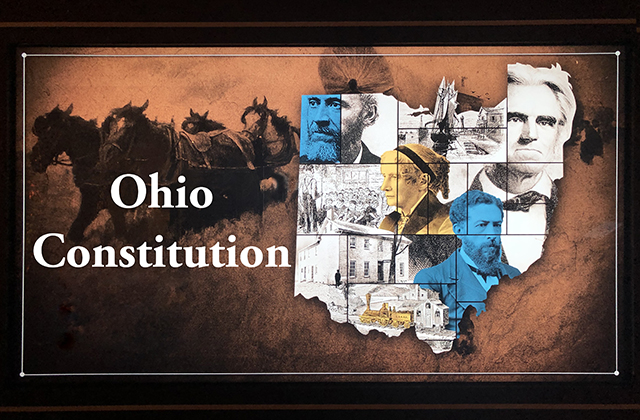 Ohio Constitution Videos
Ohio Constitution Videos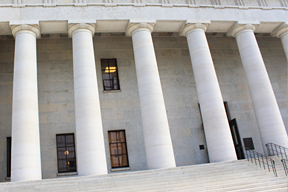 Ohio Statehouse Videos
Ohio Statehouse Videos







